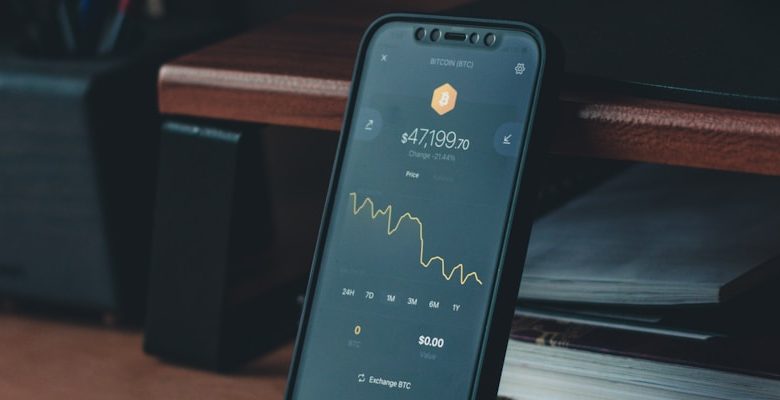The Future of Blockchain Security: Trends and Innovations

- The Evolution of Blockchain Security Protocols
- Emerging Threats in Blockchain Security
- Innovative Solutions for Securing Blockchain Networks
- The Role of AI in Enhancing Blockchain Security
- Regulatory Challenges in Ensuring Blockchain Security
- Collaborative Efforts to Strengthen Blockchain Security
The Evolution of Blockchain Security Protocols
Blockchain security protocols have undergone significant evolution to address the growing threats in the digital landscape. The early days of blockchain technology were marked by vulnerabilities that exposed users to risks such as hacking and data breaches. As a result, developers have continuously worked to enhance the security measures embedded in blockchain networks.
One of the key advancements in blockchain security protocols is the implementation of multi-signature technology. This feature requires multiple private keys to authorize transactions, adding an extra layer of protection against unauthorized access. By distributing the signing power among several parties, multi-signature technology reduces the risk of a single point of failure.
Another notable development in blockchain security is the integration of smart contracts. These self-executing contracts automatically enforce the terms of an agreement when predefined conditions are met. By leveraging blockchain technology, smart contracts provide a secure and transparent way to facilitate transactions without the need for intermediaries.
Furthermore, the emergence of encryption techniques has significantly strengthened blockchain security protocols. Encryption plays a crucial role in safeguarding data and communications within the blockchain network. By encrypting sensitive information, blockchain users can protect their assets and identities from malicious actors.
Overall, the evolution of blockchain security protocols continues to shape the future of digital security. With advancements in multi-signature technology, smart contracts, and encryption, blockchain networks are becoming increasingly resilient against cyber threats. As the technology matures, we can expect further innovations to enhance the security measures and build trust in the blockchain ecosystem.
Emerging Threats in Blockchain Security
As blockchain technology continues to evolve, so do the emerging threats in blockchain security. It is crucial for organizations to stay ahead of these threats to protect their data and assets. Some of the key emerging threats in blockchain security include:
- 1. 51% Attacks: These attacks occur when a single entity or group controls more than 50% of the network’s mining hash rate, allowing them to manipulate transactions.
- 2. Smart Contract Vulnerabilities: Smart contracts are self-executing contracts with the terms directly written into code. Vulnerabilities in smart contracts can lead to financial losses and security breaches.
- 3. Privacy Concerns: While blockchain offers transparency, it also raises privacy concerns as all transactions are recorded on a public ledger. This can expose sensitive information if not properly secured.
- 4. Quantum Computing: The rise of quantum computing poses a threat to blockchain security as it could potentially break the cryptographic algorithms that currently secure the network.
- 5. Supply Chain Attacks: Hackers can target supply chains to introduce malicious code into the blockchain network, compromising the integrity of transactions and data.
It is essential for organizations to implement robust security measures to mitigate these emerging threats and safeguard their blockchain networks. By staying informed about the latest trends and innovations in blockchain security, organizations can proactively protect their data and assets from potential cyber threats.
Innovative Solutions for Securing Blockchain Networks
As blockchain technology continues to evolve, so do the security challenges that come with it. Fortunately, there are innovative solutions being developed to help secure blockchain networks and protect them from potential threats. These solutions utilize advanced cryptographic techniques, decentralized consensus mechanisms, and other cutting-edge technologies to ensure the integrity and confidentiality of data on the blockchain.
One such solution is the use of multi-signature wallets, which require multiple private keys to authorize a transaction. This adds an extra layer of security by making it more difficult for malicious actors to gain unauthorized access to funds. Additionally, the implementation of biometric authentication, such as fingerprint or facial recognition, can further enhance security by ensuring that only authorized users can access sensitive information.
Another innovative approach to securing blockchain networks is the use of smart contracts. These self-executing contracts are stored on the blockchain and automatically execute when certain conditions are met. By utilizing smart contracts, businesses can create secure and tamper-proof agreements without the need for intermediaries, reducing the risk of fraud or manipulation.
Furthermore, the integration of artificial intelligence and machine learning algorithms can help identify and mitigate potential security threats in real-time. By analyzing patterns and anomalies in blockchain data, AI systems can quickly detect suspicious activity and alert network administrators to take appropriate action. This proactive approach to security can help prevent breaches before they occur, ensuring the continued safety of blockchain networks.
In conclusion, the future of blockchain security lies in the development and implementation of innovative solutions that leverage advanced technologies to protect networks from evolving threats. By incorporating multi-signature wallets, biometric authentication, smart contracts, and AI-driven security measures, businesses can enhance the integrity and resilience of their blockchain systems. As the technology continues to mature, it is crucial for organizations to stay ahead of potential risks and invest in robust security measures to safeguard their valuable data.
The Role of AI in Enhancing Blockchain Security
Artificial Intelligence (AI) plays a crucial role in enhancing the security of blockchain technology. By utilizing AI algorithms, blockchain networks can detect and prevent fraudulent activities more effectively. AI can analyze vast amounts of data in real-time to identify patterns and anomalies that may indicate a security breach. This proactive approach allows blockchain systems to respond quickly to potential threats, minimizing the risk of data manipulation or unauthorized access.
One way AI enhances blockchain security is through the use of machine learning algorithms. These algorithms can continuously learn from new data and adapt their security measures accordingly. By constantly evolving and improving their defenses, blockchain networks can stay one step ahead of cyber attackers. AI can also help automate security processes, reducing the likelihood of human error and ensuring consistent protection across the network.
Furthermore, AI-powered threat intelligence platforms can provide valuable insights into emerging security risks and vulnerabilities. By analyzing data from various sources, including social media, dark web forums, and cybersecurity reports, AI can help blockchain organizations anticipate and mitigate potential threats before they escalate. This proactive approach is essential in today’s rapidly evolving cybersecurity landscape.
In conclusion, AI is a powerful tool for enhancing blockchain security. By leveraging AI algorithms, blockchain networks can improve their threat detection capabilities, automate security processes, and stay ahead of emerging risks. As the cybersecurity landscape continues to evolve, AI will play an increasingly important role in safeguarding blockchain systems against malicious actors. Embracing AI technologies is essential for ensuring the long-term security and integrity of blockchain networks.
Regulatory Challenges in Ensuring Blockchain Security
One of the major challenges facing blockchain security is navigating the complex regulatory landscape. Governments around the world are still figuring out how to regulate blockchain technology effectively. This uncertainty can create vulnerabilities in the system, as bad actors may exploit regulatory loopholes to engage in illicit activities.
Regulatory bodies are working to establish guidelines and standards to protect users and ensure the integrity of blockchain networks. However, striking the right balance between security and innovation is a delicate task. Over-regulation could stifle the growth of the technology, while under-regulation could leave users exposed to risks.
Another issue is the lack of international harmonization in blockchain regulations. Each country has its own set of rules, making it difficult for global blockchain networks to comply with multiple jurisdictions. This fragmentation can hinder the adoption of blockchain technology on a larger scale.
Furthermore, the decentralized nature of blockchain poses unique challenges for regulators. Traditional regulatory frameworks may not be suitable for overseeing a technology that operates without a central authority. Finding ways to ensure compliance and enforce regulations in a decentralized environment is a pressing concern for regulatory bodies.
Collaborative Efforts to Strengthen Blockchain Security
Collaborative efforts are crucial in enhancing the security of blockchain technology. By working together, industry experts, developers, and researchers can address vulnerabilities and implement best practices to protect blockchain networks from cyber threats. These collaborations involve sharing knowledge, resources, and expertise to stay ahead of malicious actors seeking to exploit weaknesses in the system.
One effective way to strengthen blockchain security is through the establishment of partnerships between different organizations. By pooling their resources and expertise, these partnerships can develop innovative solutions to combat emerging threats. Additionally, collaborative research projects can help identify new security risks and devise strategies to mitigate them effectively.
Another key aspect of collaborative efforts in blockchain security is the sharing of threat intelligence. By exchanging information about potential risks and vulnerabilities, organizations can proactively defend against attacks and prevent security breaches. This collective approach to security ensures that the entire blockchain ecosystem remains resilient and secure against evolving threats.
Furthermore, collaboration can also involve the participation of regulatory bodies and government agencies to establish industry standards and regulations that promote security and trust in blockchain technology. By working together with policymakers, industry stakeholders can create a regulatory framework that safeguards the integrity of blockchain networks and enhances user confidence in the technology.
In conclusion, collaborative efforts play a vital role in strengthening blockchain security and protecting the integrity of decentralized systems. By fostering partnerships, sharing threat intelligence, and engaging with regulators, the blockchain community can effectively mitigate security risks and ensure the long-term viability of this transformative technology.



